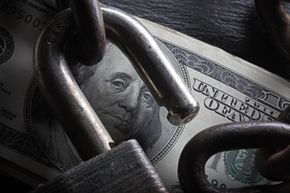
Just as winter set in, your health took a hit. The flu had you feverish and bedridden, hugging a box of tissues and whimpering for days. In the moments you felt coherent enough to have a complete thought, you wondered why you avoided getting a flu shot. Perhaps you should get one now, even though it wouldn’t do you a bit of good.
Getting a flu shot while you have the flu makes little sense. And so does planning to protect your assets after you’ve already entered into bankruptcy. Think of asset protection planning as a way to legally preserve many of the things you own so that creditors can’t take them from you. If you begin to gift assets or move cash after you have filed bankruptcy, or in some cases, the 12 months before filing bankruptcy, you could be hit by the "fraudulent transfer" law.
The key is to start asset protection early, long before you’re at the center of bankruptcy proceedings. This way, your actions won’t be viewed as fraudulent or in contempt of court. You’ll also want to seek counsel from a bankruptcy attorney before beginning any course of action [source: Adkisson].
Some of your assets are already exempt, which means they cannot be used to repay creditors. These exemptions vary by federal and state bankruptcy law, but in general include a home or vehicle. If the property is not exempt, you’ll want to formulate an asset protection plan.
Asset protection plans can become complicated and will, like anything else related to bankruptcy, have their day in court. You or your attorney will need to be able to explain the details so the protected assets can remain protected, and the requirements can vary by state. In Nevada, for example, asset protection could mean that instead of surrendering to creditors the money in your savings account, you used it to pay off your car loan; the state doesn’t allow you to protect cash, but does allow you to exempt $15,000 in vehicle equity.
According to federal bankruptcy code, no matter which state you live in, an individual retirement account (IRA) is protected during bankruptcy. You could contribute up to $1 million to your IRA and it would remain off limits. Unfortunately, you can only contribute to an IRA at the rate of $3,000 per year, so this plan could take awhile. However, if you are rolling money into an IRA from an employer-sponsored retirement account, you can usually transfer the full amount, even if it is more than $3,000 [source: Harelik].
In general, your asset protection plan may include using money in your bank accounts (which are often not exempt) to do the following [source: Asatryan]:
- Make additional payments on your mortgage in states with significantly generous homestead exemptions
- Purchase personal property that is exempt, such as a car, clothes, furniture or essential household items (the exemption amounts vary by state)
- Purchase life insurance
- Make extra payments on nondischargeable debts like student loans or child support
Lots More Information
Related Articles
- Investments and Compound Interest
- Good Debt or Bad Debt?
- How Zombie Debt Works
- What are the differences between the various chapters of bankruptcy?
- 10 Surprising Bankrupt Athletes
Sources
- Adkisson, Jay. "Ten Rules for Asset Protection Planning." Forbes. July 13, 2014. (Sept. 20, 2014) http://www.forbes.com/sites/jayadkisson/2011/07/13/ten-rules-for-asset-protection-planning/
- Asatryan, Mher. "How to Protect Bank Accounts in Bankruptcy." All Law. (Sept. 20, 2014) http://www.alllaw.com/articles/nolo/bankruptcy/protect-bank-accounts.html
- Harelik, Justin. "Protecting Assets During Bankruptcy." Bankrate. Nov. 29, 2005. (Sept. 20, 2014) http://www.bankrate.com/brm/news/bankruptcy/20051129a1.asp